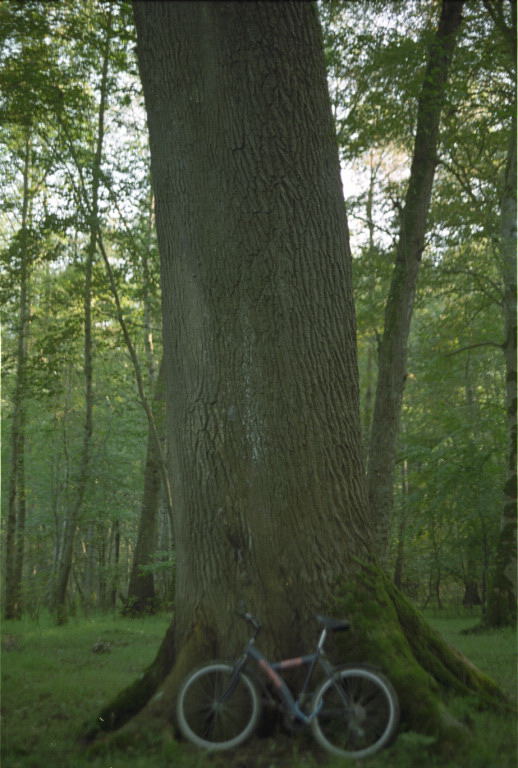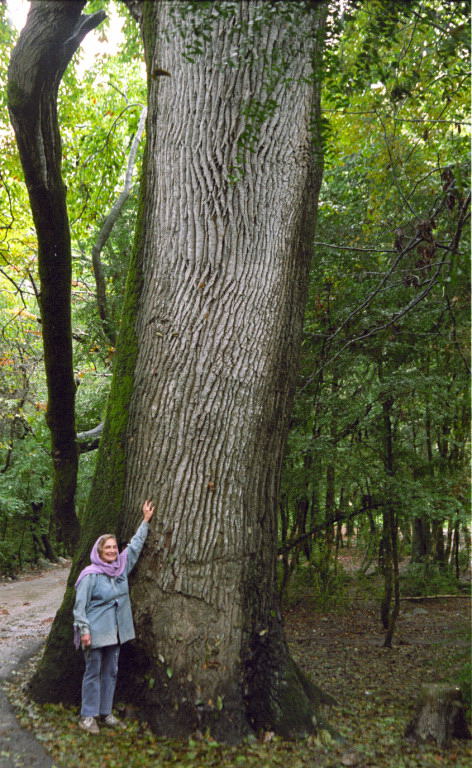|
Jeroen & ENTS,
I continue here the discussion about forests in northern Iran.
The beginning is here:
http://groups.google.com/group/entstrees/browse_thread/thread/33c978c...
First, I must thank you, Jeroen, for the excellent report by
Sperber. I translate at the end of this post some parts (with my
poor english), which ENTS may find interesting, about the importance
of those forests.
I attached two photos of Quercus castaneifolia trees.
Unfortunately I had in Iran poor equipment, poor film and no tripod,
and consequently the scanned photos are poor.
Nur-Quercus-castaneifolia
-------------------------
This tree is in a lowland forest, called Nur Park. This forest grows
on a moist soil and is dominated by Pterocarya fraxinifolia and
Populus caspica. There were cattles in this forest.
Sisangan-Quercus-castaneifolia
------------------------------
This tree grows along a small road in a lowland forest, called
Sisangan Park. The thin trees are mostly the evergreen Buxus
hyrcana. The soil is rather stony.
I wrote there are no conifers in these forests but Sperber's
report states that Taxus baccata occurs there. I didn't know that.
Also, I wrote I saw Tilia dasystyla trees. Sperber's report talks on
three Tilia species, T.begonifolia, T.caucasica and T.dasystyla. The
first two are now considered T.dasystyla subsp. caucasica, and the
species level has been enough to me. I don't know which subspecies
are the specimens I saw.
Then one question to ENTS. Sperber's article states that the
nurse log phenomena occurs in Europe only on Norway Spruce in
mountain forests, but in northern Iran it is common on broadleaf
trees. Question: Does this phenomena occur in your area? If yes,
where and on which tree species? A thought that just came to my
mind: could it be possible that the nurse log phenomena is as well a
product of a moist climate (dead wood remains moist) as a feature of
a tree species? (Northern Iran has moister climate than Germany,
mountains in Germany have moister climate than lowland.)
Jeroen, you wrote you found on internet that there are plans to
create some national parks in the Elburz (=Alborz) Mountains. Could
you give me the address?
After reading Sperber's report, I got a feeling I should go there
again!
Jeroen, tell something about forests in Turkey! I have never been
there.
Then the translation of a small part of Sperber's article.
PAGE 2:
"In the very north [of Iran] on the steep to the Caspian Coast
falling northern slopes of up to 5600 metres [18,000 feet] high
Alborz Mountains, there are forests, which we europeans cannot
imagine even in our dreams. Where all the rain clouds from Caspian
Sea become empty in the dam of this vast mountain barrier, there a
depth of 20 to 30 kilometres [12 to 19 miles] and a length of over
800 kilometres [500 miles] of the most significant rest of original
deciduous broadleaf forests in the temperate broadleaf forest belt
of the northern hemisphere has been preserved.
They were the particular topographic circumstances, which
protected these ancient forests until today. From the interior of
the country they have been separated by vast snow covered high
mountains, which can be crossed only over few on almost 3000 metres
[10,000 feet] laying passes. The narrow lowland at the coast had
been contaminated by malaria and was threatened by attacks of
nomadic riding peoples from the steppes in northeast. These forests
served also for nobility as hunting area and were therefore
particularly protected.
According to the FAO statistics of 1978 the caspic forest area
comprised still 3.4 million of hectars [8.4 millions of acres].
After islam revolution on 1979, the forest area on coast lowland has
shrunk to 1.9 millions of hectars [4.7 millions of acres] through
clearing for rice. Under the pressure of the population explosion of
this country of 68 million people, the same destiny threatens the
forest paradise as in Europe, East Asia and North America, who
destroyed the natural broadleaf forests of the temperate zone and
depleted the rests to managed secondary forests. There are still
large primary forests [in Iran], at least 300,000 hectares [740,000
acres] are considered untouched ancient forests."
Last pages criticize german nature conservation (I agree). Last
lines of the article:
"At the beginning of the unexpected invitation to Ajatollah
Noormofidi, he asked: 'What have you done with your forests? I was
last year in Austria and Germany. Everywhere only thin trees, in
lines planted, mostly only one or two species, such with needles.
Why do you have no true forests as we?' The discussion ended with
the sentence: 'The protection of forests is a godly movement.'"
Sperber says in northern Iran there are at least 740,000 acres of
untouched ancient forests. This should be read with little caution:
If I remember correctly I wrote here some weeks or months ago that
german people, even forest specialists, say very easily about a
stand with couple of fallen trees, that it is "ein unberührter
Urwald". Sperber uses exactly these words!
Kouta
 Nur-Quercus_castaneifolia.jpg
Nur-Quercus_castaneifolia.jpg
 Sisangan-Quercus_castaneifolia.jpg
Sisangan-Quercus_castaneifolia.jpg
Continued at:
http://groups.google.com/group/entstrees/browse_thread/thread/60f65ebf4551b382?hl=en
|